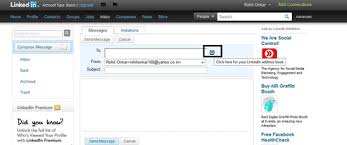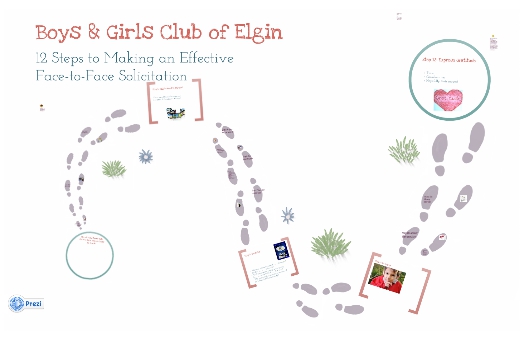 When I used to work at Boys & Girls Clubs of America (BGCA), my colleagues were responsible for the existence of something called theFUNDRAI$INGbank, which is a special webpage embedded inside of the intranet accessible to local affiliates. We outsourced maintenance of this page to FundRaisingInfo.com. There were many different resources located on “The Bank” including a free service called “Ask The Expert“.
When I used to work at Boys & Girls Clubs of America (BGCA), my colleagues were responsible for the existence of something called theFUNDRAI$INGbank, which is a special webpage embedded inside of the intranet accessible to local affiliates. We outsourced maintenance of this page to FundRaisingInfo.com. There were many different resources located on “The Bank” including a free service called “Ask The Expert“.
Whenever I talk to agencies who aren’t Boys & Girls Clubs about “Ask The Expert,” I’m typically told how lucky local Boys & Girls Clubs are to have such a service (and to have access to it for free). Usually, somewhere in those conversations, the person with whom I’m speaking says they wish they had access to such a thing.
For those of you who don’t have a national organization behind them offering such resources and services, I’ve always told them not to fret because we now live in the 21st Century and answers are mostly just a click away. I’ve encouraged non-profit friends to open their minds to the full potential that Google search offers them. I’ve also reminded them about how many non-profit bloggers are out there begging for comments, questions and engagement (this blogger not withstanding).
Now I am adding another suggestion to those non-profit staff and board volunteers who are in search of answers for free . . .
QUORA
Have you checked out this new online Q&A webpage yet? If not, I suggest you do so because it looks like a great resource for non-profit folks with questions. Here is what Wikipedia says about Quora:
Quora is a question-and-answer website created, edited and organized by its community of users. The company was founded in June 2009, and the website was made available to the public on June 21, 2010.[3]
Quora aggregates questions and answers to topics. Users can collaborate by editing questions and suggesting edits to other users’ answers.[4] Quora’s main competitors are social bookmarking sites like reddit, social networking sites like ChaCha, and numerous question and answer websites.
Unlike BGCA’s “Ask The Expert” service, the answers and advice you get from Quora might not necessarily be from an amazing expert like the folks at FundRaisingInfo.com. However, if you go into it with the right mindset and an understanding that the answers you receive might just be from your peers, then this could be a great resource for you. At the very least, it represents a good starting point for finding answers.
Here are just some of the non-profit and fundraising questions that I see being asked on Quora:
- What are some good platforms for online fundraising?
- How do you manage memberships and donation drives in a small or medium size non-profit?
- What cutting edge fundraising techniques are charities using?
- What are the characteristics of high-performing non-profits?
- How much power does a non-profit board have?
Interesting questions!
Of course, there is the obvious question, “What are some of the best ways non-profits can use Quora?” Click here if you want to see responses.
When you have a question with which you’d like other people’s opinions, where do you go online? Google? WordPress? Blogger? Facebook? LinkedIn? Quora? Where do you find the most value in your search for answers? Have you used Quora yet? If so, what was your experience? Please scroll down and share your thoughts and experiences in the comment box below because we can all learn from each other.
Here’s to your health!
Erik Anderson
Founder & President, The Healthy Non-Profit LLC
www.thehealthynonprofit.com
erik@thehealthynonprofit.com
http://twitter.com/#!/eanderson847
http://www.facebook.com/eanderson847
http://www.linkedin.com/in/erikanderson847

 I use LinkedIn. It is one the social media platforms I am on almost every day, which is probably the reason I was asked to manage the LinkedIn group page for a fundraising professionals organization where I’m a member. At first, I was happy to do it. After all, I’m on LinkedIn every day. Right? However, after a few months of being the volunteer community manager, I am left wondering: “What in the heck are we trying to accomplish with this group page?”
I use LinkedIn. It is one the social media platforms I am on almost every day, which is probably the reason I was asked to manage the LinkedIn group page for a fundraising professionals organization where I’m a member. At first, I was happy to do it. After all, I’m on LinkedIn every day. Right? However, after a few months of being the volunteer community manager, I am left wondering: “What in the heck are we trying to accomplish with this group page?” Your agency’s LinkedIn group page isn’t like your website. You shouldn’t treat it like a landing-place for all kinds of different stakeholder groups. The best group pages I’ve seen have an obvious target audience with whom they are speaking.
Your agency’s LinkedIn group page isn’t like your website. You shouldn’t treat it like a landing-place for all kinds of different stakeholder groups. The best group pages I’ve seen have an obvious target audience with whom they are speaking. I don’t care if you are managing a blog, Facebook page, Twitter account or a LinkedIn group. Content is ALWAYS the key to success and engagement.
I don’t care if you are managing a blog, Facebook page, Twitter account or a LinkedIn group. Content is ALWAYS the key to success and engagement. There is so much more to learn about managing a LinkedIn group (e.g. group policies, promotion, etc). It is impossible to cram everything into one blog post.
There is so much more to learn about managing a LinkedIn group (e.g. group policies, promotion, etc). It is impossible to cram everything into one blog post.














